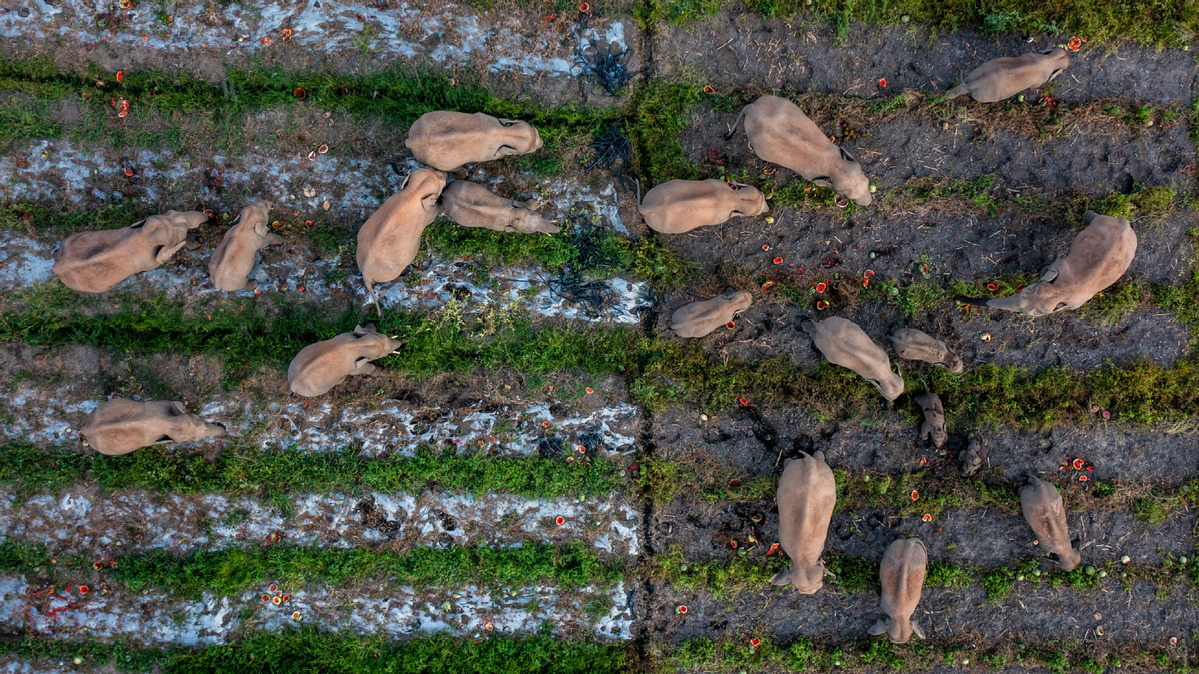Two years after epic trek, China's 'wandering elephants' embrace new life home


NEW MEMBERS, NEW FAMILIES
"The size of an elephant family typically ranges from eight to 15 individuals, with the eldest female assuming the role of family leader, guiding the herd in their movements, feeding, and resting patterns," said Chen Fei, director of the Asian elephant research center at the National Forestry and Grassland Administration.
As the population grows to a certain size, closely related sisters or mother-daughter pairs would form new families alongside their offspring, searching for new habitats and causing the elephant family to disperse into separate groups.
In June 2022, the "short-nose family" split into two groups and explored different areas. It welcomed a newborn calf last December. Now, the family consists of 20 members in total, with 13 active around Xishuangbanna's Puwen township, and seven around the prefecture's Dadugang township together with 23 wild elephants of the "Ranran family."
"The splitting and merging of elephant families is a natural phenomenon, driven by the elephants' need for optimal survival and reproduction," Chen said, adding that given their massive size, Asian elephants require a significant amount of food and water on a daily basis, necessitating constant migration in search of these resources. "Consequently, families may join forces with others during this process."
Field monitors reported that in recent years, almost every wild Asian elephant herd in Yunnan's Xishuangbanna and Pu'er has experienced an annual influx of newborns. By the end of 2021, the elephant population in Yunnan, the main habitat of the animal in China, had reached approximately 360 individuals, showcasing a significant increase from less than 150 elephants recorded in 1976.
"Such heartening development signals significant achievement in China's biodiversity conservation efforts. At a time when the global population of Asian elephants is dwindling, the 'baby boom' of wild elephants in China represents a milestone in preserving ecological balance," said Wan Yong, head of the provincial forestry and grassland bureau.


















